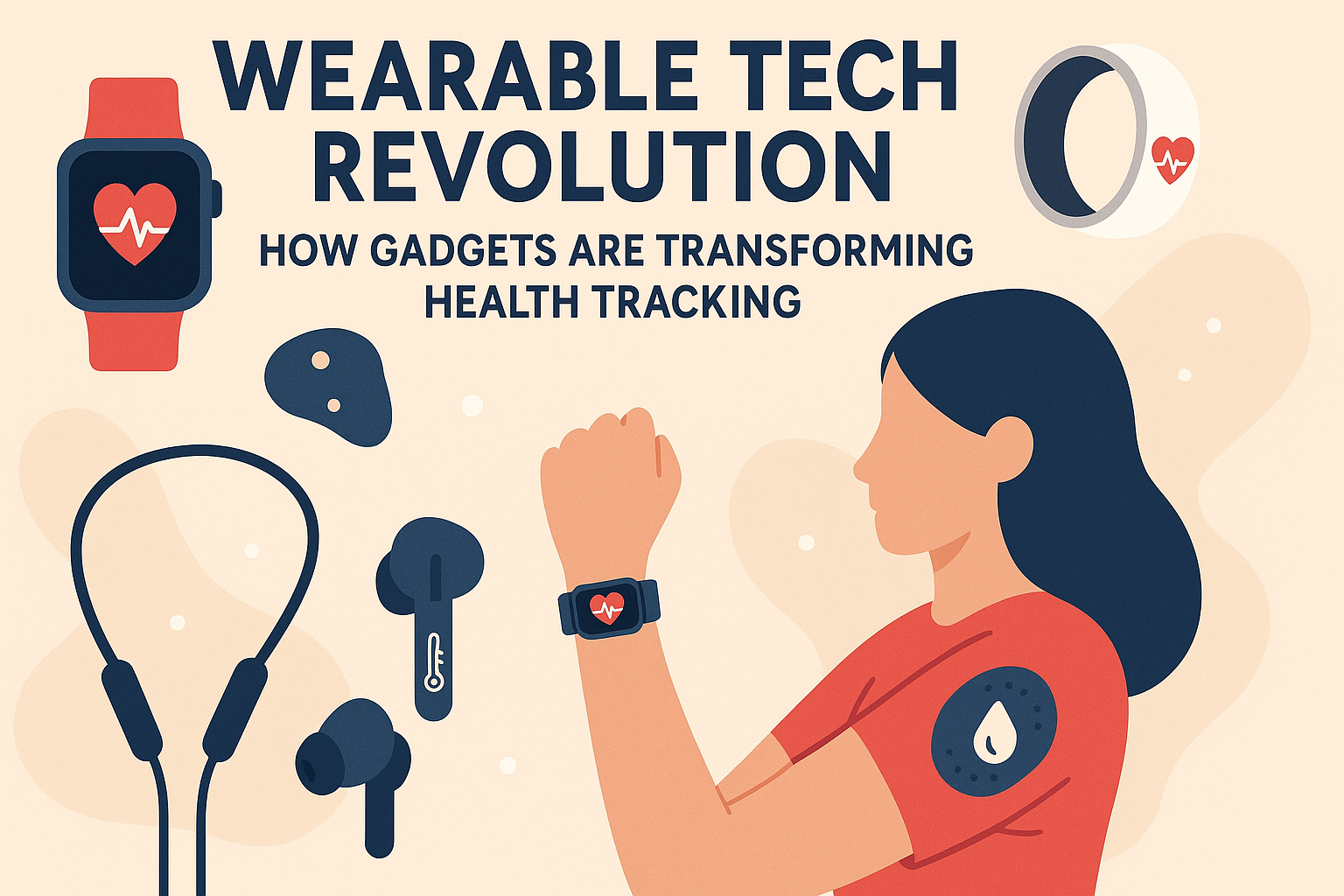Blog
Wearable Tech Revolution: How Gadgets Are Transforming Health Tracking

In 2025, wearable tech is at the forefront of the health and fitness revolution, turning everyday gadgets into powerful tools for monitoring and optimizing well-being. From smartwatches that detect irregular heart rhythms to rings that track sleep quality, these devices provide real-time insights that empower users to take control of their health. As searches for "best wearable tech 2025" and "health tracking gadgets" surge, X-Fitt.com dives into how this technology is reshaping fitness trends, making preventive care accessible and personalized.
Whether you're an athlete fine-tuning performance or someone aiming for better daily habits, understanding wearable tech can elevate your routine. This guide covers the essentials, top devices, integration tips, and more to help you navigate the wearable tech revolution in 2025.
Why Wearable Tech Is Revolutionizing Fitness in 2025
The wearable tech boom in 2025 is driven by our need for data-driven health management in a fast-paced world. Here's how these gadgets are transforming the landscape:
- Real-Time Health Insights: Devices alert you to potential issues, like elevated heart rates or poor sleep, enabling early intervention. For instance, some can detect atrial fibrillation, potentially saving lives.
- Personalized Coaching: AI algorithms suggest workouts, recovery days, or nutrition tweaks based on your data, boosting adherence by up to 40% according to industry reports.
- Holistic Wellness Tracking: Beyond fitness, wearables monitor mental health via stress levels, hydration, and even sweat analysis for electrolyte balance.
- Integration with Ecosystems: Sync with apps, smart homes, or medical records for seamless data sharing, supporting remote patient monitoring and reducing hospital visits.
- Accessibility and Motivation: Affordable options make tech available to all, with gamification features like badges and challenges to keep users engaged.
With the global wearable market projected to grow significantly, these devices are key to preventive care, especially post-pandemic.
Top Wearable Devices for Health Tracking in 2025
Ready to upgrade your tracking? Here are five standout wearables in 2025, chosen for their innovative features, user reviews, and versatility:
- Apple Watch Series 10: This powerhouse offers ECG, blood oxygen monitoring, sleep tracking, and temperature sensing for cycle tracking. Its AI coaching provides personalized activity rings and workout suggestions. Ideal for iOS users focused on overall health.
- Website: https://www.apple.com/watch/
- Google Play: Not applicable (iOS-focused)
- App Store: https://apps.apple.com/us/app/apple-watch/id1066495209
- Oura Ring Gen 4: A discreet ring excelling in sleep and readiness scores via HRV, temperature, and activity tracking. It monitors over 30 biometrics, including stress and recovery, perfect for holistic wellness without a screen.
- Website: https://ouraring.com/
- Google Play: https://play.google.com/store/apps/details?id=com.ouraring.oura
- App Store: https://apps.apple.com/us/app/oura/id1043290183
- Garmin Forerunner 965: Geared toward athletes, it features advanced GPS, VO2 max, stamina tracking, and performance analytics. Great for runners with built-in mapping and recovery advice.
- WHOOP 4.0: Screenless band emphasizing strain, recovery, and sleep with personalized coaching to avoid overtraining. Suited for performance-driven users.
- Website: https://www.whoop.com/
- Google Play: https://play.google.com/store/apps/details?id=com.whoop.android
- App Store: https://apps.apple.com/us/app/whoop/id957669233
- Samsung Galaxy Watch 7: For Android fans, it includes body composition analysis, ECG, sleep apnea detection, and AI-powered health insights. Stylish with customizable features.
- Website: https://www.samsung.com/us/watches/galaxy-watch/
- Google Play: https://play.google.com/store/apps/details?id=com.samsung.android.app.watchmanager
- App Store: Not primarily (Android-focused)
When selecting, consider compatibility, battery life, and specific needs like waterproofing for swimmers.

How to Integrate Wearables into Your Fitness Routine
Incorporating wearables is straightforward—here's a step-by-step guide:
Step 1: Choose and Set Up
Pick a device based on your goals (e.g., Oura for sleep focus). Download the app, pair it, and input your profile data for accurate baselines.
Step 2: Track Daily Metrics
Wear it consistently to monitor basics like steps (aim for 10,000 daily) and heart rate. Use features like guided breathing for stress relief.
Step 3: Set Goals and Follow Insights
Leverage AI suggestions: If recovery is low, opt for yoga over HIIT. Example weekly plan:
- Monday: Cardio – Track run with GPS on Garmin.
- Wednesday: Strength – Monitor reps and heart rate zones.
- Friday: Recovery – Focus on sleep data from Oura.
- Sunday: Review – Analyze weekly trends for adjustments.
Step 4: Sync and Share
Integrate with apps like MyFitnessPal for nutrition or share data with doctors for better care.
Pro Tip: Start simple to avoid data overload—focus on 2-3 metrics initially.
Potential Challenges and Solutions
While revolutionary, wearables aren't flawless:
- Accuracy Issues: Sensors can vary; solution: Calibrate regularly and cross-check with professional tools.
- Battery Life: Some last days, others hours; choose based on needs, like Garmin's long-lasting options.
- Privacy Concerns: Data sharing risks; opt for devices with strong encryption and review permissions.
- Cost: Premium models are pricey ($200-600); start with budget-friendly like Amazfit.
Consult healthcare pros for medical interpretations to maximize benefits safely.
The Impact on Mental Health and Long-Term Wellness
Wearables extend beyond physical tracking, supporting mental health by monitoring stress via HRV and suggesting mindfulness sessions. In 2025, with rising awareness, this integration promotes balanced lifestyles, reducing burnout and improving overall quality of life.
Long-term, consistent use leads to better habits, with studies showing improved sleep and activity levels among users.
Final Thoughts: Join the Wearable Tech Revolution
The wearable tech revolution in 2025 is making health tracking smarter, more intuitive, and essential for modern fitness. By choosing the right gadget and integrating it thoughtfully, you can achieve sustainable results and proactive wellness. Explore these devices today and transform your health journey!
For more tips, check X-Fitt.com's guides on "AI Workouts" or subscribe for updates. What's your favorite wearable? Comment below!
